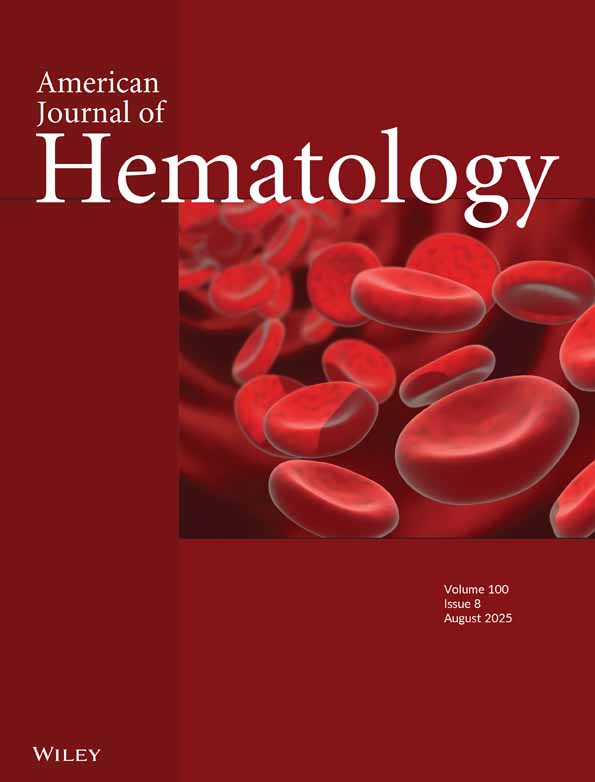Leukemogenic risk of hydroxyurea therapy in polycythemia vera, essential thrombocythemia, and myeloid metaplasia with myelofibrosis
Abstract
In polycythemia vera (PV), treatment with chlorambucil and radioactive phosphorus (p32) increases the risk of leukemic transformation from 1% to 13–14%. This risk has been estimated to be 1–5.9% with hydroxyurea (HU) therapy. When compared with historical controls, the risk with use of HU does not appear to be statistically significant. The leukemogenic risk of HU therapy in essential thrombocytosis (ET) and in myelofibrosis with myeloid metaplasia (MMM) is unknown. HU remains the main myelotoxic agent in the treatment of PV, ET, and MMM. We studied 64 patients with these three disorders, seen at our institution during 1993–1995. The patients were studied for their clinical characteristics at diagnosis, therapies received, and development of myelodysplasia or acute leukemia (MDS/AL). Forty-two had PV, 15 ET, and 6 MMM, and 1 had an unclassified myeloproliferative disorder. Of the 42 patients with PV, 18 were treated with phlebotomy alone, 16 with HU alone, 2 with p32, 2 with multiple myelotoxic agents, and 2 with interferon-α(IFN-α). Two patients from the phlebotomy-treated group, one from the HU-treated group, and 1 from the multiple myelotoxic agent-treated group developed MDS/AL in the larger group, 11 received no treatment or aspirin alone, 18 were treated with phlebotomy alone, 25 with HU, 5 with multiple myelotoxic agents, 2 with p32, 2 with IFN-α, and 1 with melphalan. Study of the entire group of 64 patients showed that only one additional patient (total of 5 out of 64) developed MDS/AL. This patient had been treated with HU alone. Statistical analysis did not show any association between clinical characteristics at diagnosis, or HU therapy, and development of MDS/AL (P = 0.5). Thus, our data provide no evidence suggestive of increased risk of transformation to MDS/AL with HU therapy in PV, ET, and MMM. Larger, prospective studies are needed to study this issue further. © 1996 Wiley-Liss, Inc.




